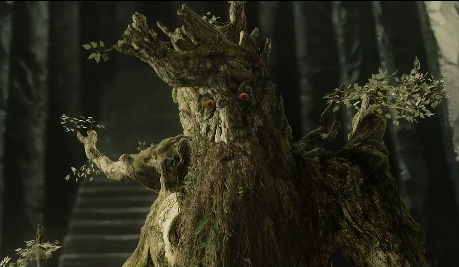D&D: Unearthed Arcana – Rangers & Rogues

This week Wizards is bringing you some R&R with Rangers and Rogues both getting new options in this week’s Unearthed Arcana.
That’s right, it’s time to string your bow, double-check to make sure you have at least 16 daggers close at hand, and go find a corner of the tavern to sit and brood in–because rangers and rogues are getting new options in this week’s Unearthed Arcana: The Horizon Walker and Primeval Guardian for rangers, and the Scout for Rogues.
- Rangers of the Horizon Conclave guard the world against threats that originate from other planes. They seek out planar portals and keep watch over them, venturing to the outer and inner planes as needed to defeat threats.
-
Rangers of the Primeval Guardian Conclave follow an ancient tradition rooted in powerful druidic magic. These rangers learn to become one with nature, allowing them to channel the aspects of various beasts and plants in order to overcome their foes.
-
Scouts are skilled in woodcraft and stealth, allowing you to range ahead of your companions during expeditions. Rogues who embrace this archetype are at home in the wilderness and among barbarians and fighters, serving as the eyes and ears of war bands across the world.
First things first, even though Rogues are only getting one archetype, there’s another one you can check out: the Inquisitive Rogue, from the earlier gothic-horror flavored Unearthed Arcana. Right, now that we’ve got that out of the way, let’s dive in and see what these archetypes have to offer their respective classes. Let’s start with the ranger.
Apparently 5th edition decided to upgrade them with a V6.
The Horizon Walker
One of the original prestige classes, back in 3.0 days, the Horizon Walker has always been about going beyond the horizon–both metaphorically and literally because you became suited to travelling between planes. The 5th Edition Horizon Walker keeps to those roots. Only now they’re viewed through the lens of ranger-as-protector instead of simply as an explorer. They’re given the tools they need to fight against extraplanar threats, starting with a skill list that includes protection from evil/good, protection from energy, and banishment, all of which provide a much-needed extra bit of oomph to the Ranger spell list.
Speaking of the tools you need to fight extraplanar threats, at 3rd level you get one of the defining features of the archetype–the ability to designate a foe within 30 feet and until the end of your turn, completely ignore their resistances, with a bonus 1d6 extra force damage on the first attack you hit it with this turn. This is pretty strong, and while it may not be as damaging as the colossus slayer feature from the Hunter archetype, once you start running up against resistant foes, you’ll really start to shine.
This archetype is a little more Walker than Horizon, it seems.
Add to that the ability to go ethereal as a bonus action (1/short or long rest) for a turn, and straight up the ability to teleport 10 feet between your attacks (as well as granting you a third attack with your attack action)–the class seems to hold up pretty well. The other abilities are just icing on the cake, and really hone in on the idea that you’re used to stepping between worlds–you can sense planar portals and as the capstone feature, become resistant to damage (only better, because you halve it, which can’t be overcome) as a reaction as you step momentarily between planes.
Primeval Guardian
The Primeval Guardian is all about communing with nature and drawing on its power to defeat your enemies. Leaning a little more towards druids on the primal spectrum, Primeval guardians get a nice extra sutie of spells, including entangle, which is one of the stronger battlefield control spells out there, conjure animals, and insect plague.
But they take the metaphor of being a guardian of nature a little more literally than that, as the rest of the archetype is all about becoming an avatar of nature. Starting at 3rd level, you gain the ability to transform into a “guardian form” which is described as a “treelike person, covered in leaves and bark.”
No mention on whether you’re voiced by Jonathan Rhys-Davies or not though.
It’s a pretty serious transformation too. You become Large ™, gain 5 extra feet of reach, and sure, your speed is reduced to 5 feet, but at the start of each of your turns you gain half your level in temporary hit points. And that’s just the basic form. Sure it’s not so tough that you’ll never take damage, but it is very strong. And as you level up, this form gets stronger.
At 7th level, your hit point maximum (and current hp) increase by 2 per Ranger level when you assume the guardian form–which is only a bonus action to transform into. You can explicitly exceed your normal hp maximum with this rule, and can possibly engage in shenanigans like getting injured as a human ranger, transforming (as a bonus action) into the guardian form and getting all of those extra hit points and temporary hit points, then, on your next turn changing back again–another bonus action, returning to full health, and then ready to transform again (complete with more hp).
Again, not necessarily game breaking–but it seems like this class is built to endure a heaping helping of punishment, so you’ll want to be aware of that as both player and GM. This is more of a support archetype–you won’t necessarily be dealing all the damage, but you’ll be prepared to take it, and to help heal your friends and shape the fight as it unfolds.
Scout
Alright, now let’s talk about the Rogue Archetype, the Scout.
Scouts are the wilderness-survival-focused rogues. Where other rogues know how to skulk in dark streets and alleys, or how to pick the locks of the gilded cages that nobles lie in, Scouts know how to find shelter in the wilderness, how to kill a mockingbird for food, or which plants are safe to hide in.
This theme is taken care of entirely by one feature of the class, though. At 3rd level, you gain proficiency in both Nature and Survival and can double your proficiency bonus any time you use those skills. Aside from that, Scouts are all about skirmishing and ambushing their foes. They are the masters of hit and run tactics. 3rd level also grants scouts the ability to move up to half your speed, without provoking opportunity attacks, as a reaction any time an enemy ends its turn within five feet of you. So right away, mobility is key for this class. You’ll never be out of position.
Especially since, at 9th level, your speed increases by 10 feet, including any swim or climb speed you might have. At 13th level, you gain the ability to set the tempo of the fight, giving your allies a +5 to their initiative scores during a surprise attack. And at 17th level you can strike swiftly–gaining a bonus action attack that can benefit from your sneak attack (even if you’ve already used it this round), though from the wording, I think it only applies if you sneak attack more than one creature. Either way, it’s still really strong, and I like the way this archetype feels. It’s very straightforward, but seems like it’d be fun to play.
Well, it looks like Wizards is back to playing around with class Archetypes. Which is great. I can’t wait to see what they do for Warlocks, in particular–and it looks like they’re just around the corner. In the meantime, don’t forget to check out the survey for the Artificer.
Check out the new Ranger and Rogue Archetypes.
Take the Artificer Survey.
~Happy adventuring!





